Cover image: Mountain by Qin Jun
When I started the “Romancing Portal Three Kingdoms” series, I was curious about how this quirky set came to be, so I reached out to Henry Stern, sole designer of Portal Three Kingdoms, to see if would talk to me about his memories from the set.
Months earlier, Henry had spoken to Mark Rosewater on the Drive to Work podcast, recounting his contributions to sets from Alliances to the original Zendikar, and he was kind enough to speak with me in June to talk further about Portal Three Kingdoms.
Read our other entries: Introduction; The Yellow Scarves Rebellion; Dong Zhuo Takes Control; The Dying Embers of Rebellion; The Rise of Cao Cao; Cao Cao Conquers the North; The Battle of Red Cliffs; How the West was Won; The Fall of Guan Yu; New Emperors
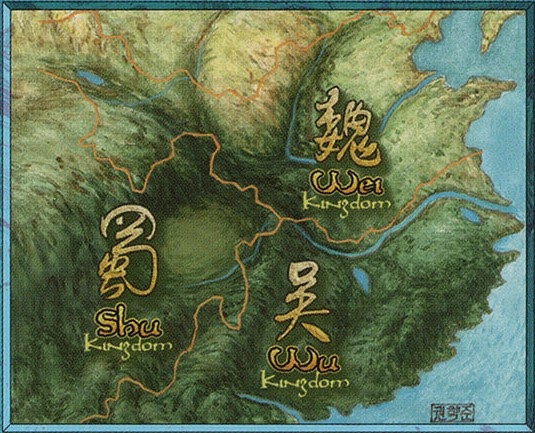
Balance of Power by Quan Xuejun
Jacob: Thanks for taking the time to speak with me, Henry. Portal Three Kingdoms is unusual in so many ways. In addition to being based on a real world story, you—correct me if I’m wrong—were the sole designer. That’s something we almost never see with Magic sets. How did you manage an entire Magic product as a sole designer?
Henry: Yes, I was the sole designer, which is unusual for MtG. But, this was an unusual set. However, this set was more of a re-imagining (or maybe “adapting” is a better word) of our basic Portal set, as opposed to designing a completely new set with completely new mechanics. So, it was a different design task, in many ways easier, but in some much harder.
Jacob: Portal 3K is also unusual because the source material and its cultural importance is massive. Did you choose the set’s theme, or was that something Bill Rose or another colleague gave to you?
Henry: The task came from Bill, but the work was 100% mine.
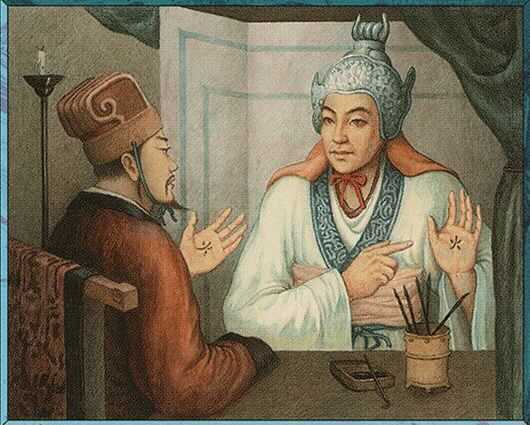
Brilliant Plan by Song Shikai
Jacob: In your interview on Drive to Work, you mentioned the immense amount of material based on the Romance of the Three Kingdoms. For example, the 10-volume graphic novel series by Asiapac, the 1000-page Ming Dynasty novelization by Luo Guanzhong—how deep did you go in your research?
Henry: I read the full novel, and the graphic novels (which were great), I also watched a mini series (sorry, I don’t remember exactly which network it was from). And finally, I checked out a few games that existed at the time. While it has always been immensely important in Asia, it feels like it has grown in popularity in the west over the past 20 years, driven primarily through gaming.
Jacob: A lighter question, but one the translator (Moss Roberts) says he’s asked a lot, so I’ll ask you: The cast of characters is simply massive—the edition of the novel I have lists over 100 principle characters. Did you develop any favorites? And if so, why are those characters your favorites?
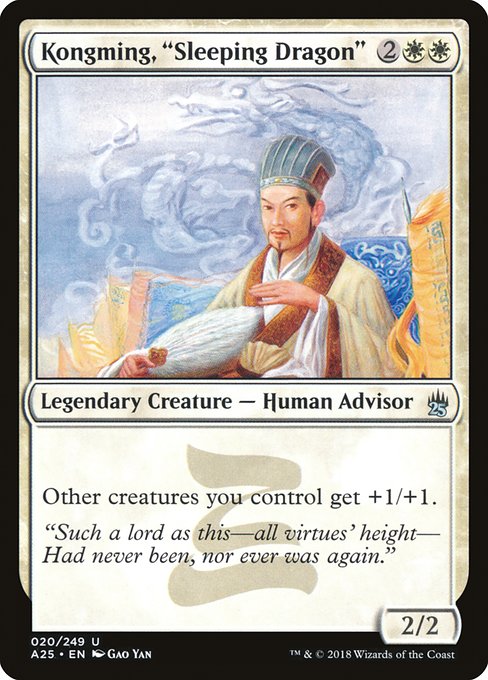
Henry: Of course! I think my favorite character was Kongming (so clever!), but I also admire Cao Cao (so ruthless!). He reminds me of the villains in modern TV shows or movies where you really understand their motivations, and in some ways are not really villains at all.
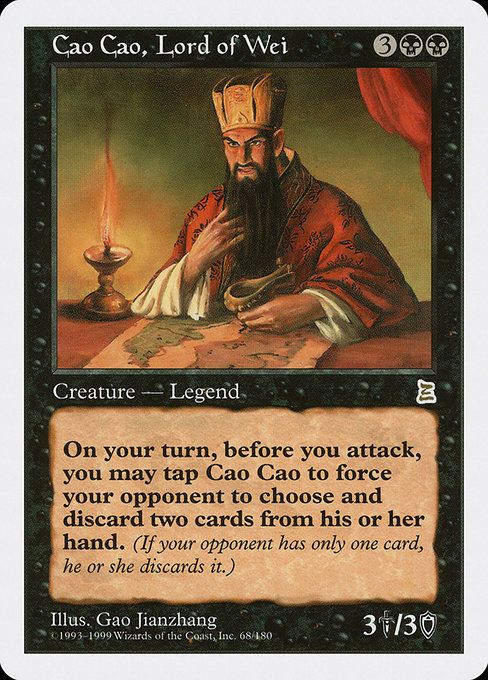
Jacob: I wonder if you remember how P3K was received at the time—did people respond favorably?
Henry: Creatively, people liked it. But financially, it didn’t quite achieve what we had hoped. But then again, I don’t think that “Portal” in general ever really worked as we had hoped. I was nervous that people would feel I had despoiled the IP in some way, but all the folks I spoke with in Asia (and elsewhere) seemed to really like the interpretation, and appreciated the work done to adapt 3K to Magic.
Jacob: Portal Three Kingdoms was designed to be an introductory set, but compared to some other sets, even non-introductory sets, it has a fair amount of cards that still see play in Vintage, Modern, and Commander formats—cards like Imperial Seal, Imperial Recruiter, and Sun Quan, Lord of Wu—which was recently played by Post Malone on an episode of Game Knights to take the game! Are there any cards for that set that you’re particularly proud or fond of?
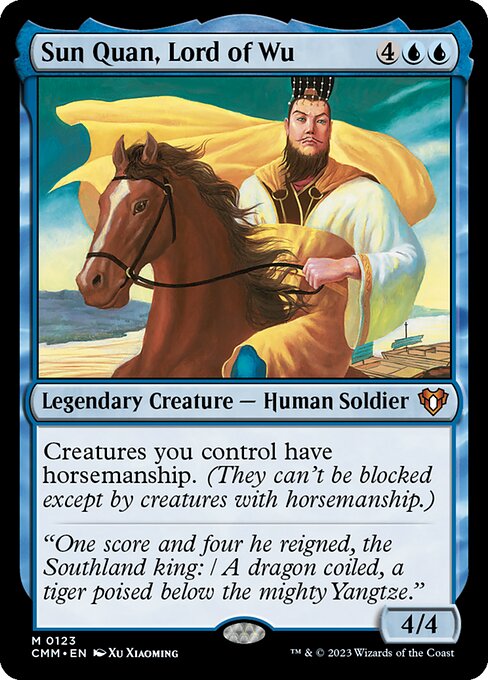
Henry: Well, in order for a set to be good, you need to have some cards that are perceived as being strong; sometimes, they actually are too strong! But that’s OK. Just because a set is introductory in nature does not mean it can’t have strong cards.
Sun Quan, eh? That’s a surprise; his ability (essentially “make all your creatures unblockable”) is great, but 6 mana is a lot to spend on a 4/4. I am mostly proud of two things: First, all of the legendary cards. I really strove to capture some of the essence of what each character did in each card. Second, the Zodiac cycle.
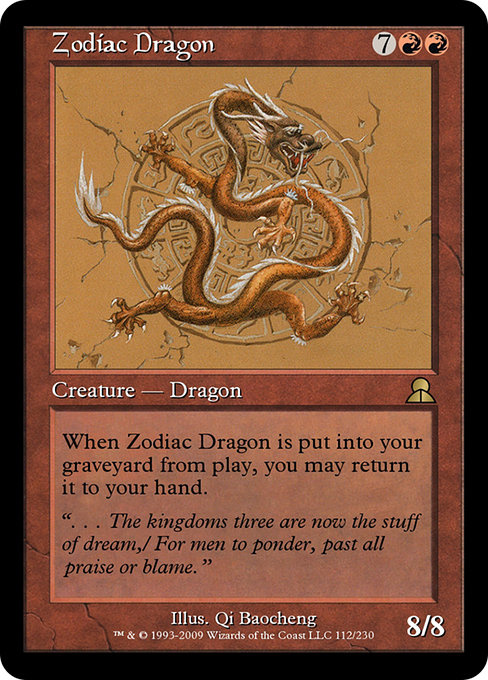
Jacob: Another notable thing about this set is the art: it seems Wizards used all Asian artists, and many cards have a distinct style that sets them apart from other Magic products. Were you involved in that process at all, and if so, what do you remember about it?
Henry: Yes, I was very involved. I had to give the initial art concept for each card to Li [Tie] (the art director) who then worked with each individual artist. But for the most part, the art direction wrote itself, as almost everything came directly from the novel. To this day, I think that this set has some of the best art WotC has ever done.
Jacob: My final question on P3K: Looking back, if you could make a Three Kingdoms set again, what would you change? How might you go about it, if you were to undertake this task today (without the restriction of it being an introductory set)?
Henry: Well, removing the “portalness” of it would be a huge deal, and I think you would want to introduce one or two new mechanics into the game. Some other changes would be obvious and for the better (Wielding the Green Dragon just becomes an equipment card, for example). Some sorceries would become instants, not to mention enchantments, etc. I think I would still go with the basic layout of Shu = white, Wu = blue, Wei = black. I also think using horsemanship in place of flying makes sense. There is so much “there” there in 3K, I think it has enough IP to support a full block’s worth of cards.
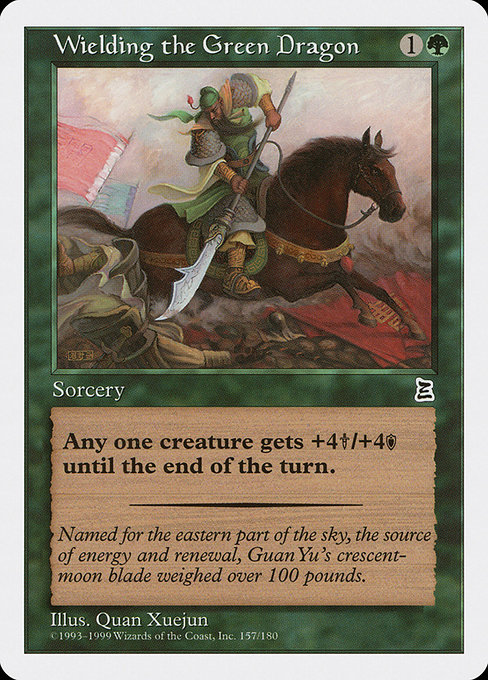
Jacob: Easily! Thanks, so much, Henry, for all of this. Before I let you go, I want to ask just a couple of questions about your work as a whole. First, what was your favorite Magic the Gathering set that you worked on, and why?
Henry: Looking back on things, I think P3K remains my favorite set, because it was so unique, but of the other sets I have fond memories of Tempest (my first set as lead) and Invasion (loved the “multi-coloredness” we did in that set).
Jacob: Lastly, you’ve gone on from Wizards to do more and more game design. Is there anything you’re working on now that you’re keen to let people know about? Do you have a favorite “child” since leaving Wizards?
Henry: I am still quite proud of Vegas Showdown (the Euro-style board game I made while at WotC). Since then, I have moved into the online gaming world. You can blame me for much of what you liked (or hated!) about Zynga’s Mafia Wars, and a ton of other Zynga games. I am currently working at Scopely, leading the Looney Toons: World of Mayhem team.
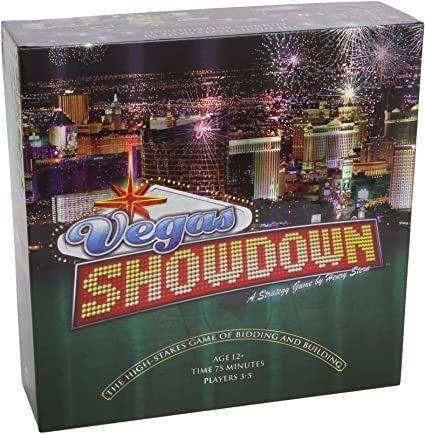
Jacob: Thanks so much for your time, Henry, I really appreciate it.
Henry: You’re very welcome.
If you want to hear more about Henry Stern’s work at Wizards of the Coast, check out his appearance on Mark Rosewater’s Drive to Work, episode 787.
Jacob Torbeck is a researcher and instructor of theology and ethics. He hails from Chicago, IL, and loves playing Commander and pre-modern cubes.

